I much prefer providing natural sources of food, but in the early spring and again late in the fall, I put out a hummingbird feeder when there may be fewer flowers blooming for those “early birds” or slow-to-go stragglers.
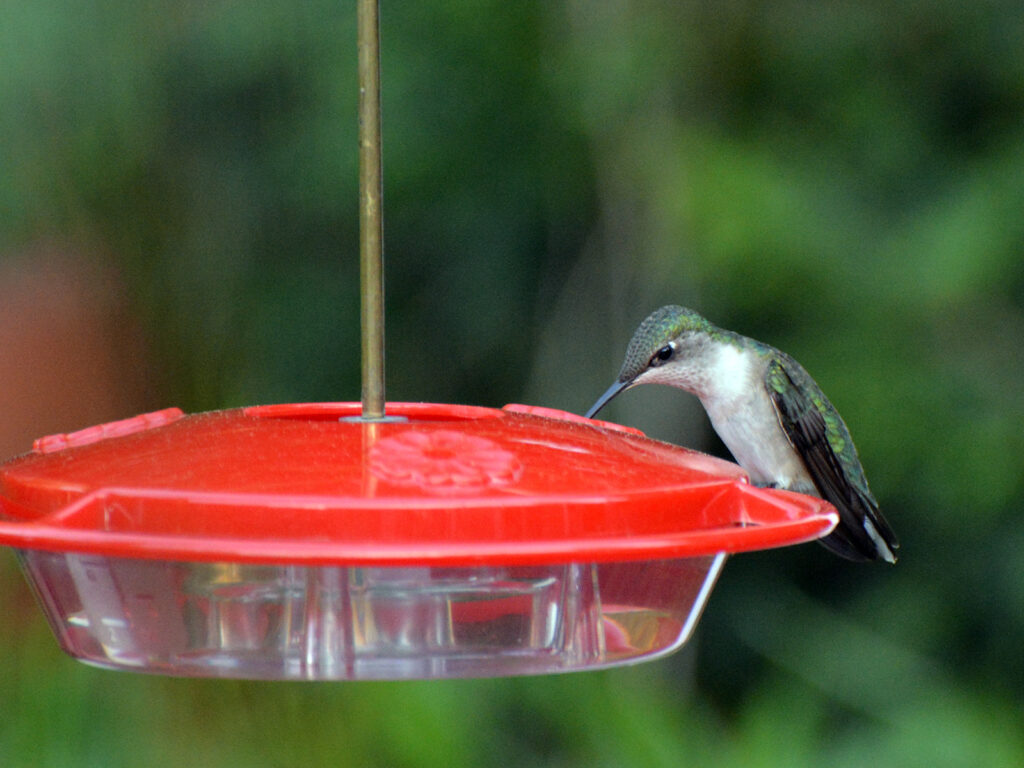
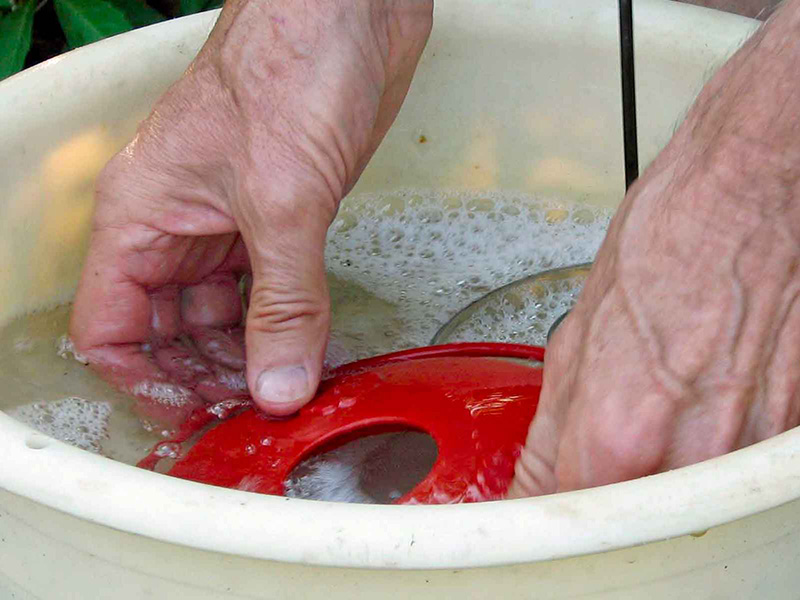
For hummingbirds’ health, it’s important to thoroughly clean hummingbird feeders every few days — which is why we provide lots of natural sources of nectar instead of nectar feeders in the summer. (We have enough trouble cleaning things INSIDE the house without adding extra cleaning duties OUTSIDE, especially when the consequences of not cleaning the feeders are grim.)
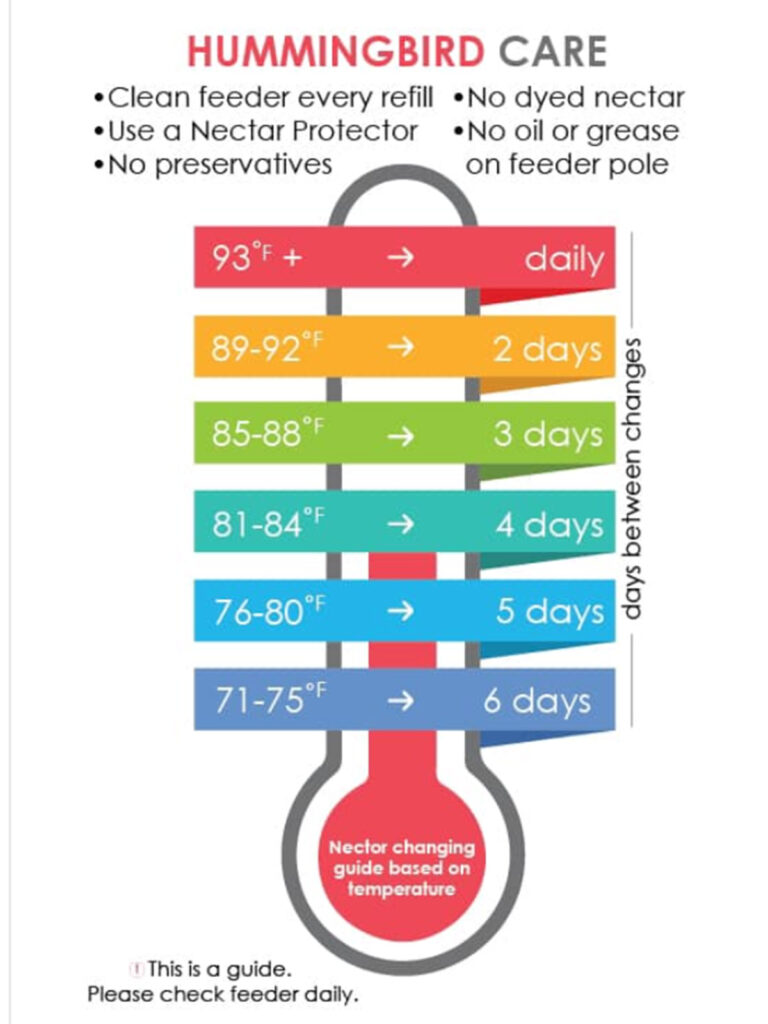
This chart was included in an Environment for the Americas newsletter.
It shows how frequently hummingbird nectar needs to be changed, especially in hotter weather. (I’ll bet that most feeders don’t get cleaned this often!)
Plants are so much easier, and I suspect that their nectar provides nutrients missing from simple sugar water. Besides, the hummingbirds’ favorite flowers are also some of our favorites, too!
Nectar recipe
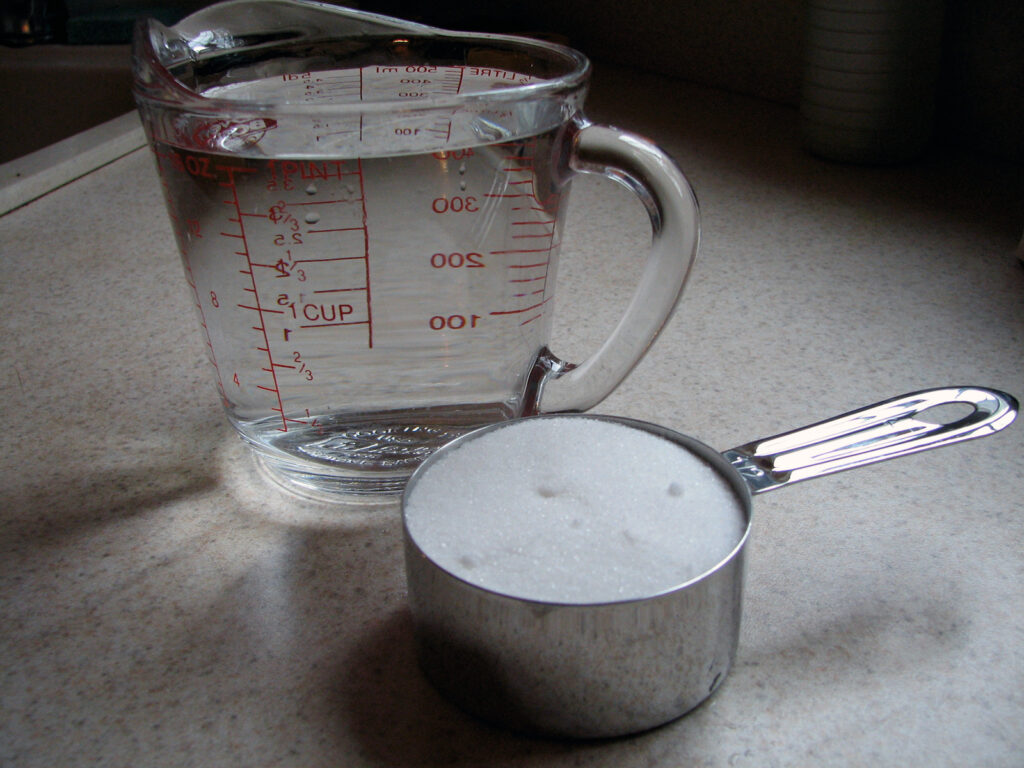
I make nectar for the feeders with regular cane sugar and water in the recommended proportion of 4 parts water to 1 part sugar, the proportion the Cornell Lab of Ornithology recommends (see the Resources below). Using 1 cup of water and 1/4 cup sugar makes an amount to fill my feeder.
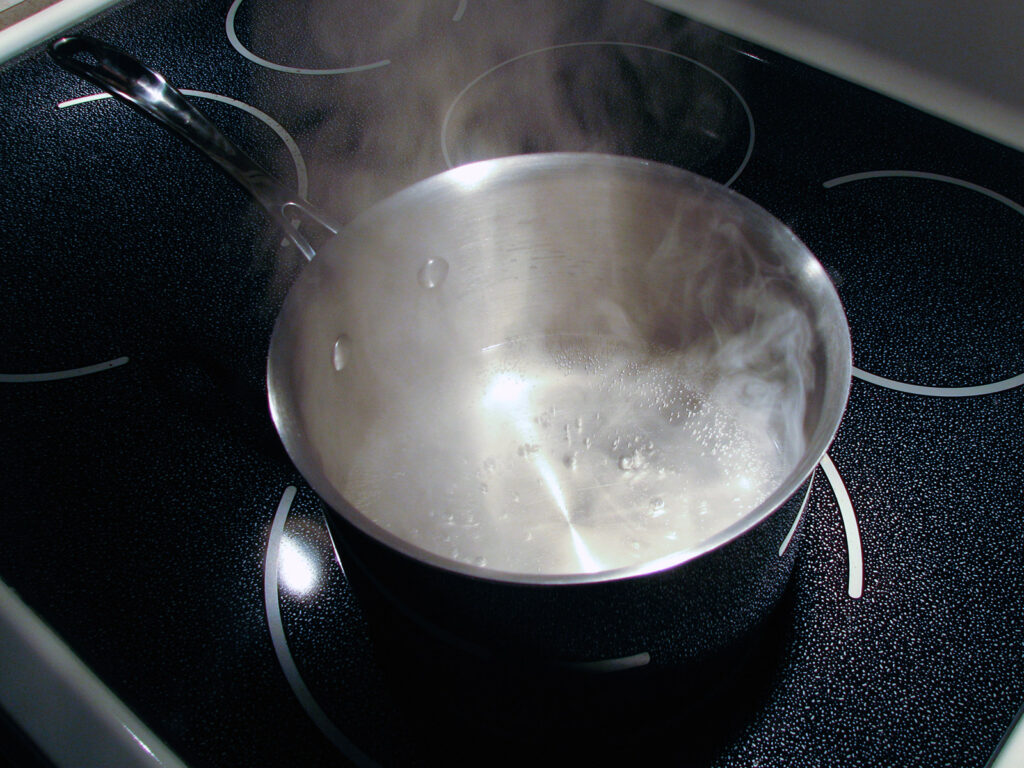
I combine the sugar and water, bring it to a boil, and boil it for one minute. After it’s cool, I can fill the feeder.
If I make extra, I have to store it in the refrigerator to prevent it from getting moldy, but usually I just make 1 cup.
CAUTIONS — WE ****NEVER*** USE:
- honey for the same reasons it’s dangerous for human infants;
- artificial sweeteners since there’s no food value;
- red food coloring since it would just introduce unnecessary chemicals. Our feeder, like most hummingbird feeders, is itself made of red plastic, which is enough red to attract the hummers.
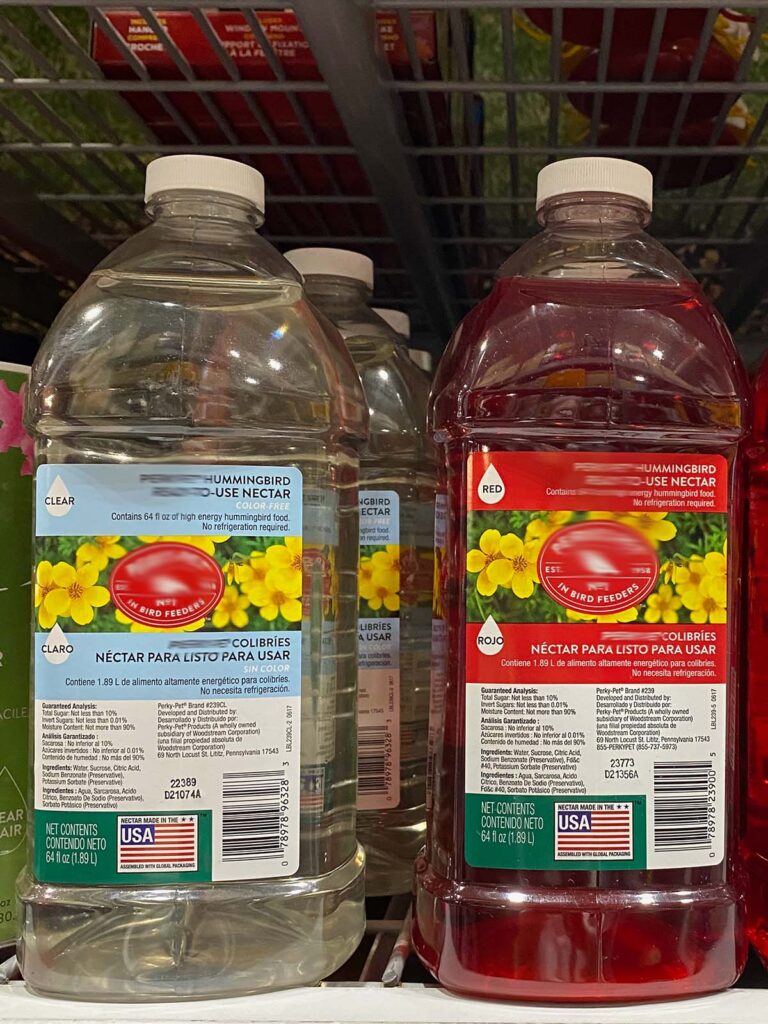
I saw this commercially available hummingbird nectar at a local store (and blurred out the brand name).
To me, the choice is “CLEAR”! If I were to buy this, I’d definitely choose the clear nectar without the dye, whether or not they claim that this particular dye is safe. All hummer feeders have enough red to attracting the birds, and this dye adds an unnecessary risk.
Of course, my first choice is native plant flowers!
An unusual circumstance
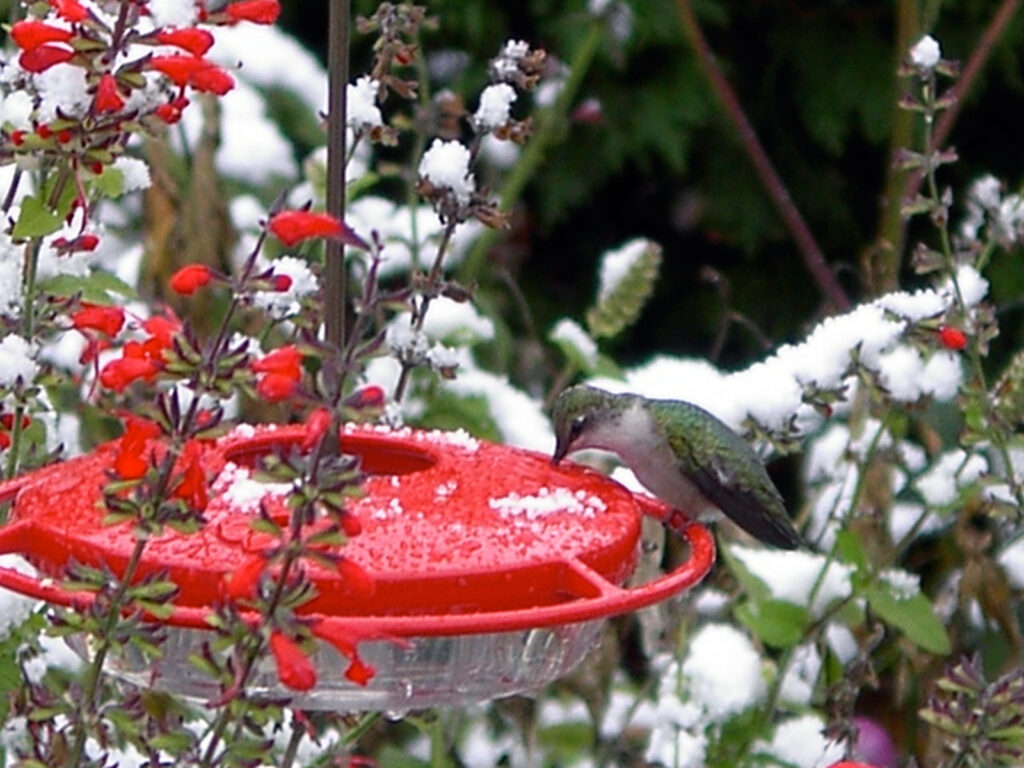
In 2003, I spotted this hummer on November 5. It was thrilling to see, but rather sad since it seems unlikely that it would be able to make it to its winter home in Central America.
For those hummers who do make it, though, we purchase Bird-Friendly Habitat coffee so they’ll have a winter home when they arrive!
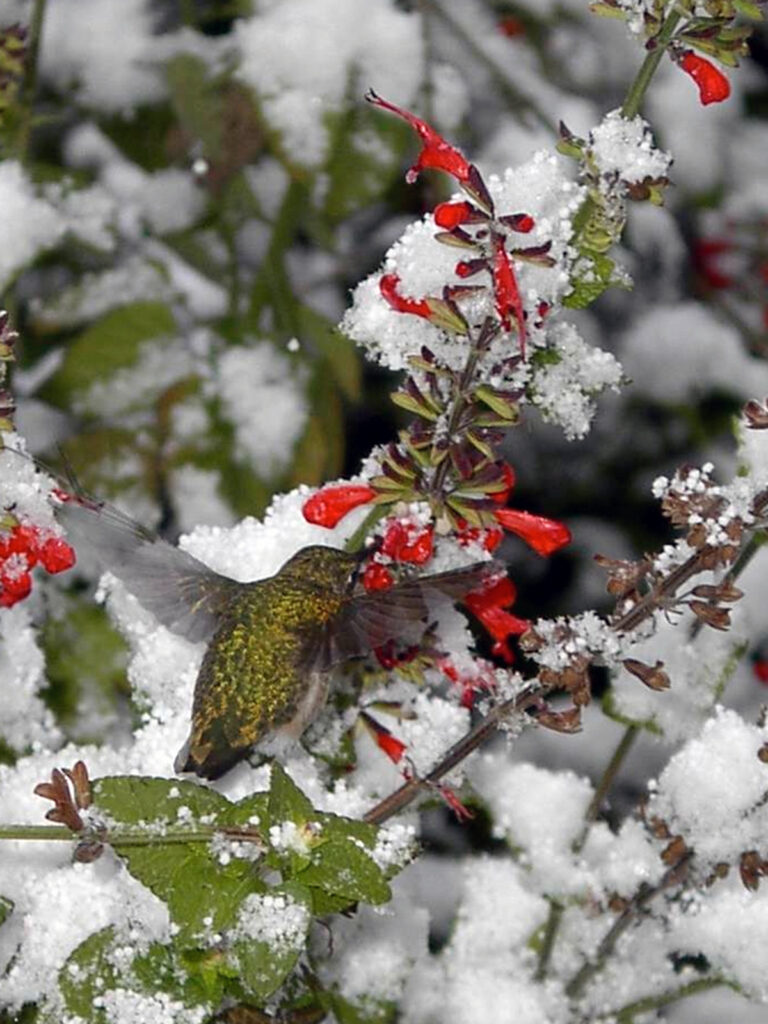
These flowers are ‘Lady in Red’ salvia, a cultivar of a native salvia (Salvia coccinea). It’s actually native to the southeast, not the northeast, so it’s not truly native. Besides that, it’s a cultivar.
Our views on what’s native and on cultivars of natives have evolved since we saw this hummingbird so long ago. Research is now showing these “nativars” don’t always have the benefits of true native species. We no longer plant this.
Resources
- Cornell Lab of Ornithology:
- Audubon:
- Journey North:
- No Red Dye IMPORTANT!!
Reflections
I consider myself to have been the bridge between the shotgun and the binoculars in bird watching. Before I came along, the primary way to observe birds was to shoot them and stuff them.
~ Roger Tory Peterson
